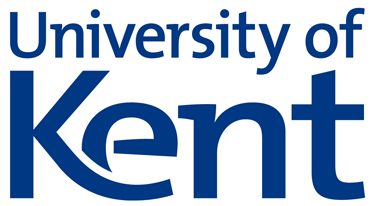val float : value:'T -> float (requires member op_Explicit)
Full name: Microsoft.FSharp.Core.Operators.float
--------------------
type float = System.Double
Full name: Microsoft.FSharp.Core.float
--------------------
type float<'Measure> = float
Full name: Microsoft.FSharp.Core.float<_>
Full name: Microsoft.FSharp.Collections.list<_>
CO886: Software Engineering
Understandable code
Tomas Petricek
email: t.petricek@kent.ac.uk
twitter: @tomaspetricek
office: S129A
Understanding on a small scale
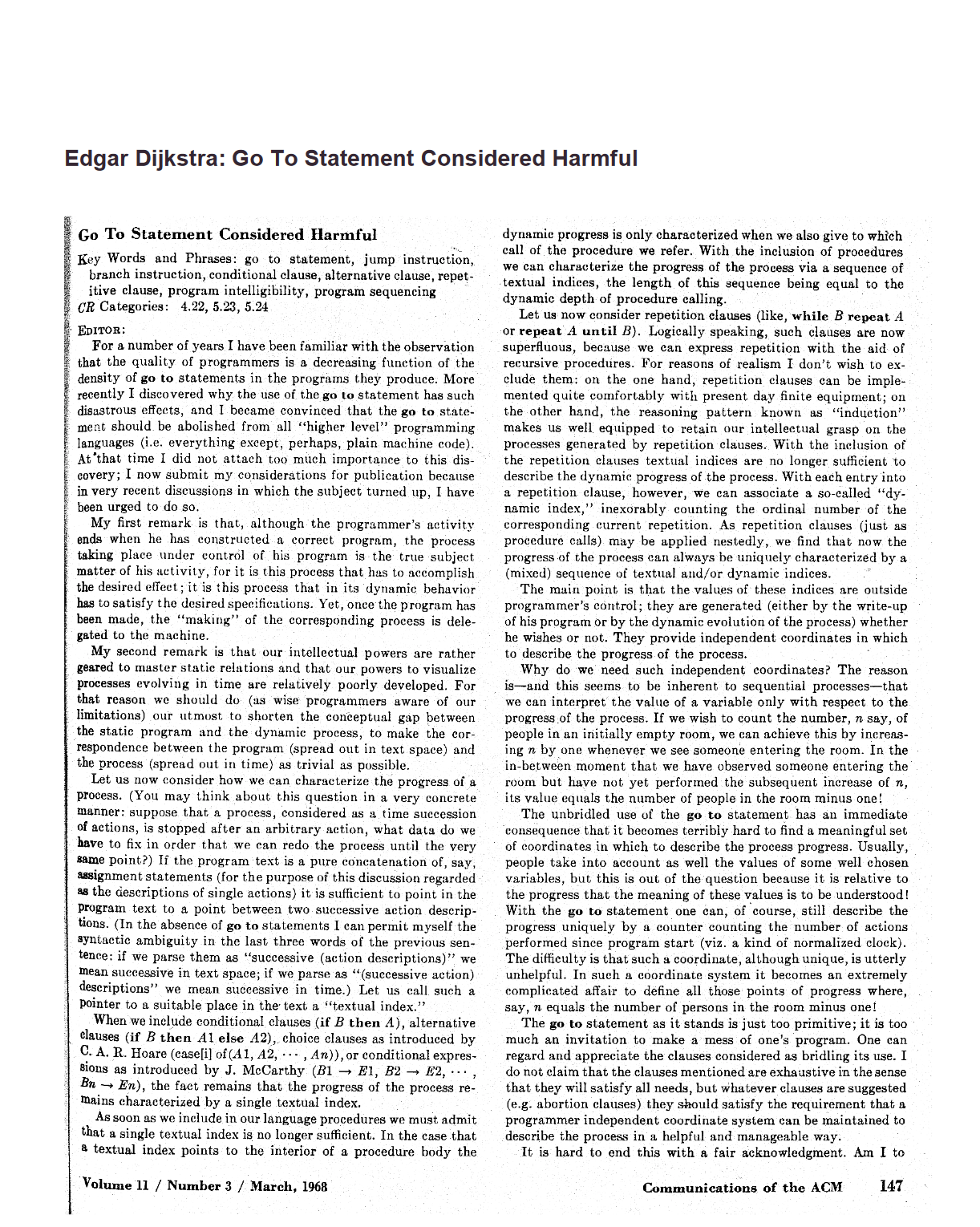
GOTO considered harmful
Can you tell what this does?
1: 2: 3: 4: |
|
And what about this?
1: 2: 3: |
|
Understanding on a large scale
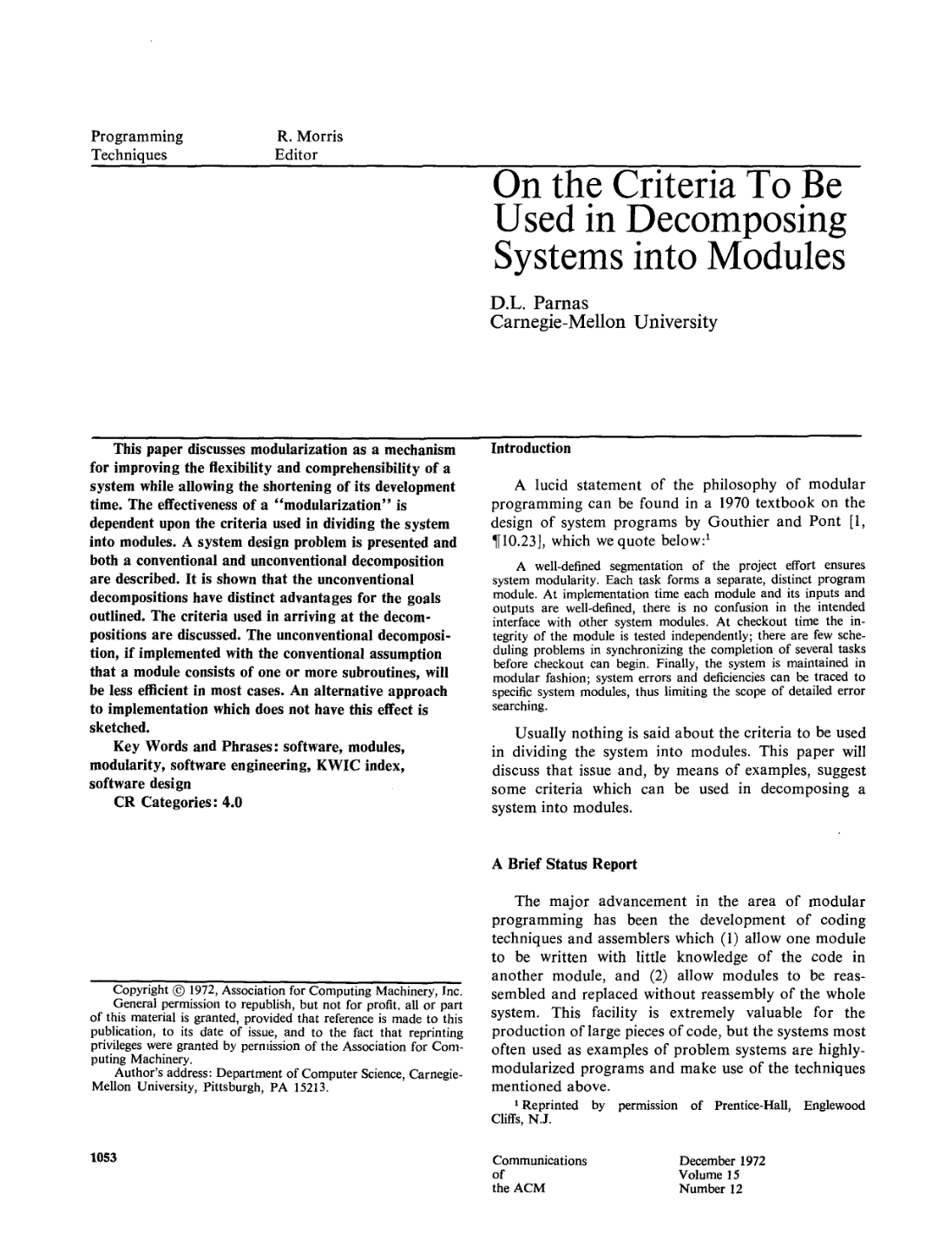
David Parnas (1972)
Conventional
Subroutines follow the order of execution
Unconventional
Modules abstract some aspects of implementation
How to structure large programs

Procedural approach
- Programs that run top-to-bottom
- Break program into smaller steps
- But what data is passed between?
Logical abstraction
- Identify logical components
- Hide implementation details
- How data is represented, stored, ...
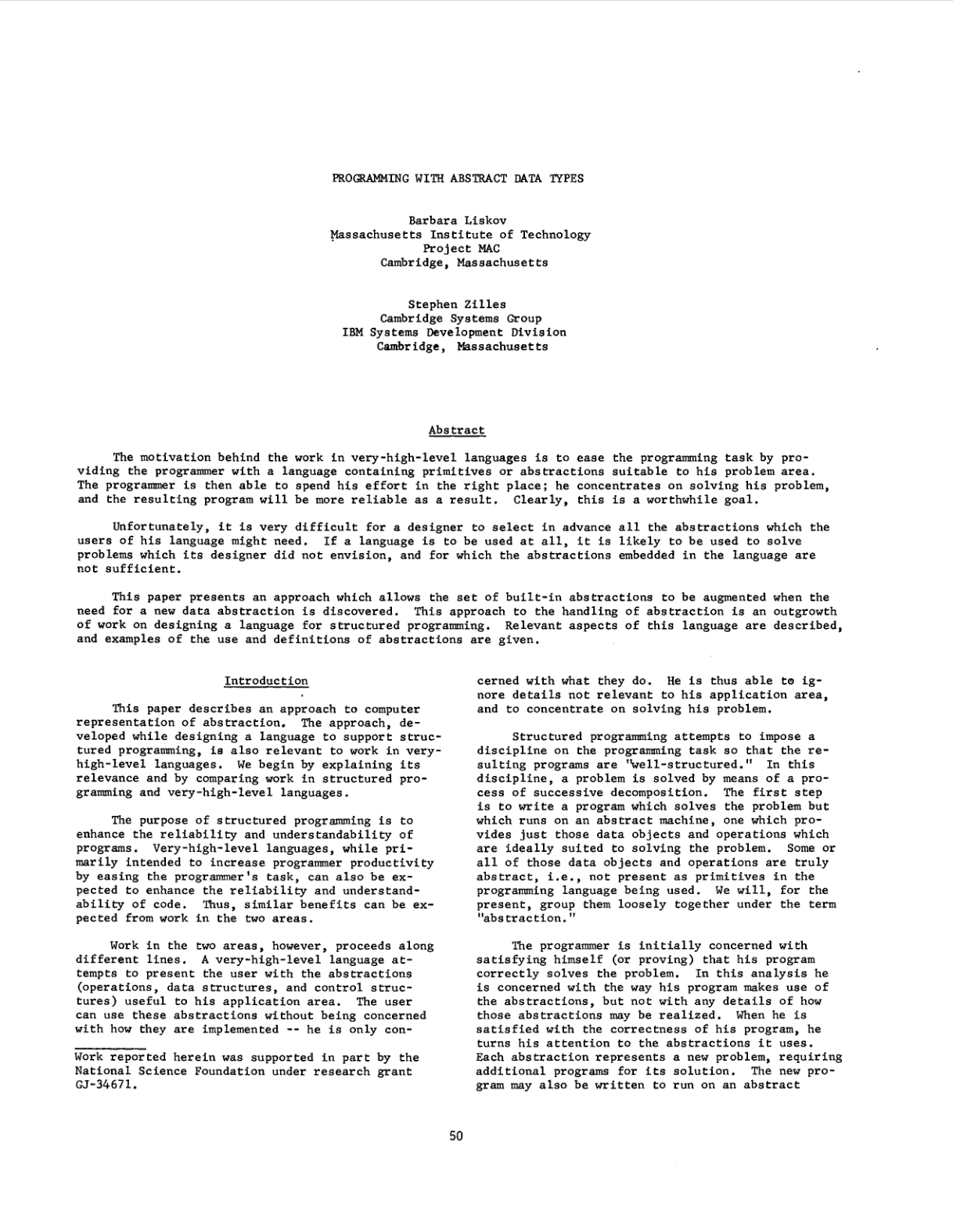
Barbara Liskov (1974)
Abstract data types
Programming language mechanism for abstraction
Object oriented programming
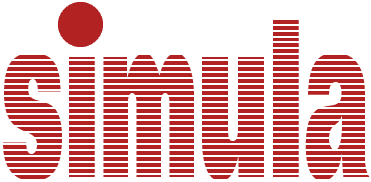
Origins of objects
- Simulating real-world systems
- World consists of objects
- Created according to a scheme
Object-oriented abstraction
- Class defines a template for object
- Multiple instances of a class
- Objects hide implementation details

Alan Kay et al. (1972)
Smalltalk
"Actually I made up the term "object-oriented", and I can tell you I did not have C++ in mind."
Galactic scale
Computer made of small computers that exchange messages
Logical structure at a small scale
Keeping program logic simple
Is there an easier way to write this?
1: 2: |
|
You do not need conditional statement at all!
1:
|
|
Keeping program logic ... logical (1/2)
When does the following return a product page?
1: 2: 3: 4: 5: 6: 7: |
|
When product is available and not hidden!
Which branch is the "happy path" branch?
Keeping program logic ... logical (2/2)
Keep the happy path branches consistent!
1: 2: 3: 4: 5: |
|
Reduce unnecessary nesting
1: 2: 3: |
|
Program logic
Encoding logic in a readable way
Use appropriate language constructs
Make sure you're not complicating things
Keep "happy path" through code clear
Do not use unnecessary nesting of logic
Writing useful comments
Are you explaining something you cannot see from code?
1: 2: 3: |
|
Also applies to Java inline documentation for methods
1: 2: 3: 4: |
|
Comments and structure
Making code easy to read and understand
Don't use comments if you have nothing to add
Comments should add history, motivation, context
Use consistent spacing and indentation
Keep nesting and length of functions sensible
Demo: Improving quality of a poor code snippet
1: 2: 3: 4: 5: 6: 7: 8: 9: 10: 11: 12: 13: 14: 15: 16: 17: 18: 19: 20: |
|
1: 2: 3: 4: 5: 6: 7: 8: 9: 10: 11: 12: 13: 14: 15: 16: 17: 18: 19: 20: 21: |
|
Code that fits your brain
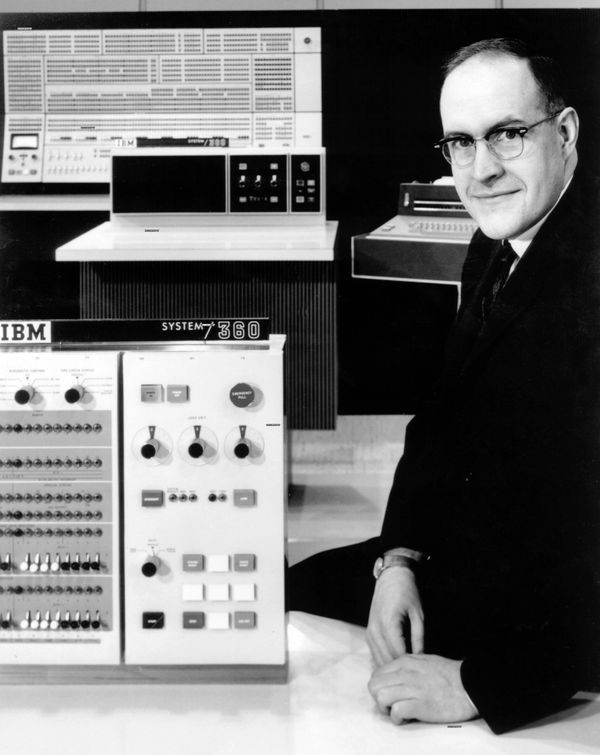
Any product that is sufficiently big or urgent to require the effort of many minds thus encounters a peculiar difficulty: the result must be conceptually coherent to the single mind of the user and at the same time designed by many minds.
Fred Brooks (1995 [1975])
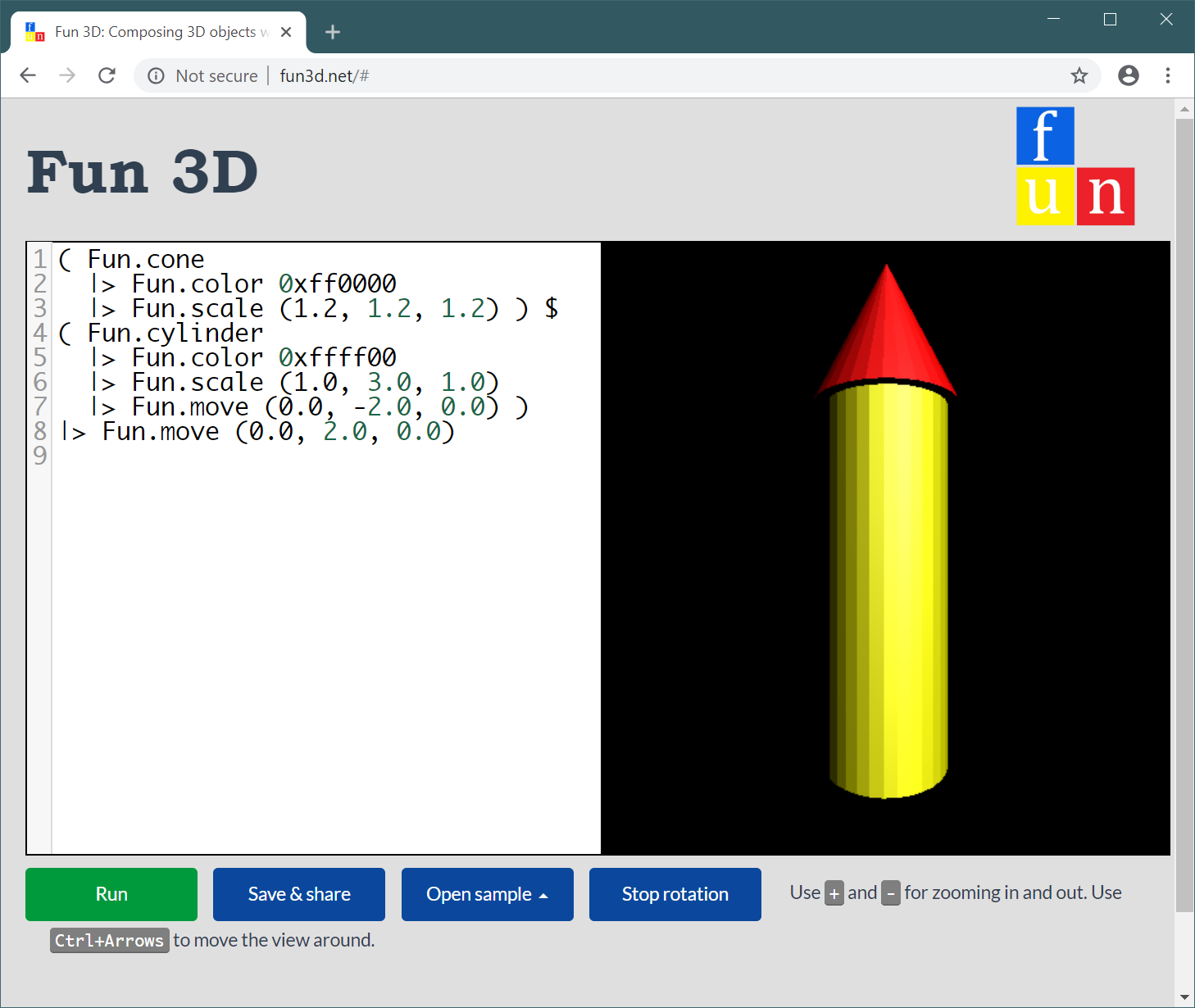
DEMO: Fun 3D
www.fun3d.net
Functional programming abstractions
Domain-specific languages
Object-oriented model of shapes
1: 2: 3: 4: 5: 6: 7: 8: 9: 10: 11: 12: 13: 14: |
|
Two ways of modelling 3D worlds
Object-oriented class hierarchy

Functional algebraic data type
1: 2: 3: 4: |
|
Two ways of modelling 3D worlds
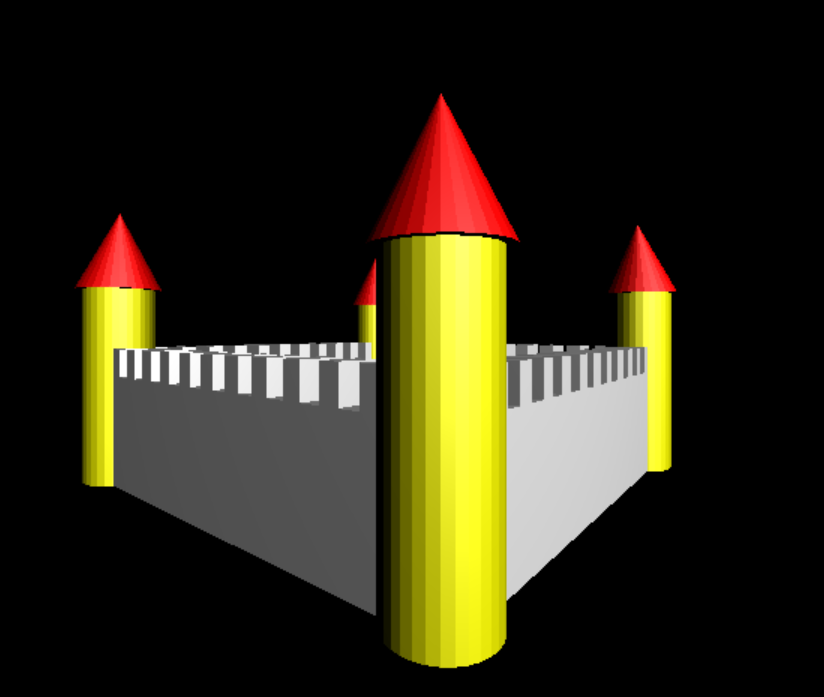
Object-oriented class hierarchy
- Abstract method in the base class
- Implementation in each shape
- Easy to add new shapes
Functional algebraic data type
- Separate data from functions
- Render function handles all cases
- Easy to add new operations
Domain-specific languages

Motivation: When do we need this?
- Repeated problem, many variations
- User stories, game logic, contracts
- Accessible to non-programmers
Solution: Build a language for a given domain!
- External – New language with custom syntax
- Internal – Library in an existing language

Domain Specific Languages (DSLs)
Model
What we work with? How does it compose?
Syntax
How can we write it in a human-friendly way?
Functional and object-oriented DSLs
Functional languages
Custom operators and function composition
1: 2: |
|
Object-oriented languages
Fluent interfaces and the builder pattern
1: 2: |
|
From objects and beyond
Many ways to express problems in code
Object-oriented - decompose into entities
Functional - separate data and functions
Domain specific languages - for a specific problem
Event sourcing - state as a list of events
Microservices - system as independent servers
Maintaining and improving quality
Maintaining code quality
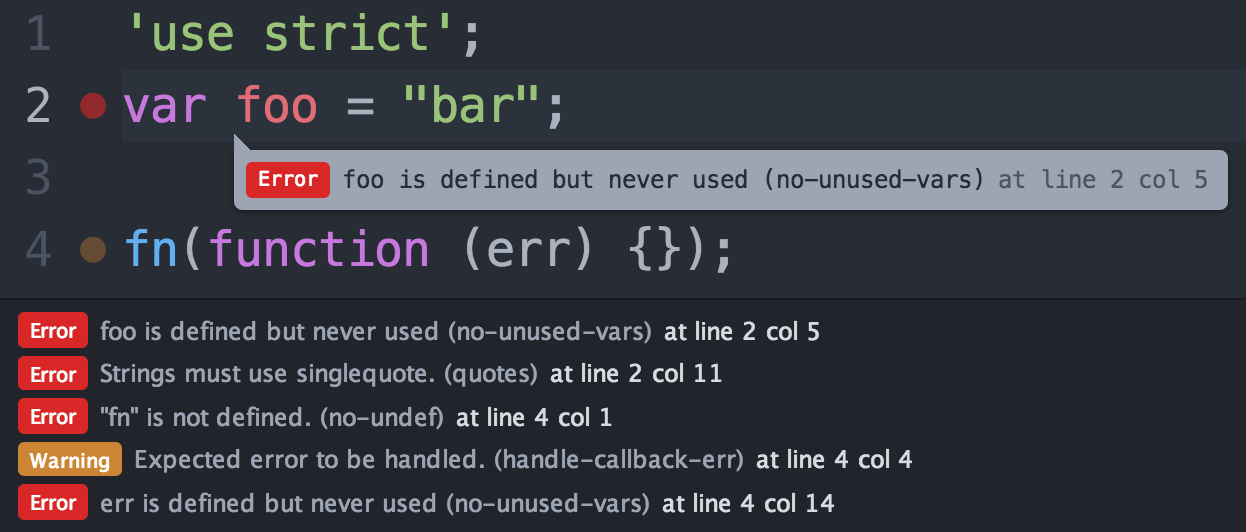
Social approaches
- Pair programming - all code writing is done in pairs
- Code reviews - colleague reads code before merging
Technological solutions
- Compiler - only checks if computer can understand
- Style checkers or linters - check stylistic errors and suspicious constructs
Code smells
Hints that code has poor quality
Long parameter list (bloaters)
Switch statement (OO abuse)
Speculative generality (dispensables)
Improving code quality
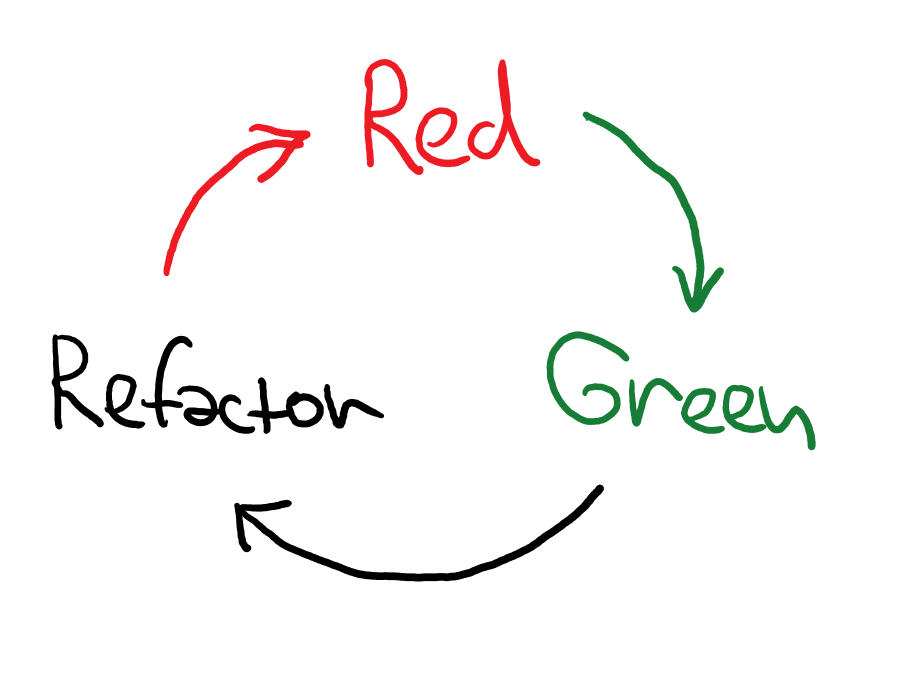
Refactoring
Is a code transformation that
(i) Does not change meaning
(ii) Improves quality of code
Test-driven development
- Red - Add failing test for new unimplemented feature
- Green - Make it pass using whatever hacks you need
- Refactor - Improve quality without breaking it
Example of refactoring (1/2)
The name of the function and input argument are poor
1: 2: 3: |
|
Improve quality using rename refactoring
1: 2: 3: |
|
Note that we use new name in all calls to conv
Example of refactoring (2/2)
What is wrong with this function?
Comment indicates it does two separate things
In reality it would be very long
1: 2: 3: 4: 5: 6: 7: 8: |
|
Example of refactoring (2/2)
Improve quality using extract function refactoring
1: 2: 3: 4: 5: 6: 7: 8: 9: 10: |
|
Note that comment becomes a function name!
Summary
Code quality
What is code quality and why it matters
More time is spent reading code than writing it
Extreme programming - simplicity & shared understanding
Understandability on small and large scale
Keeping the happy path clear
Conceptually coherent code structure
Maintaining and improving code quality
Social and technological approaches to quality
Refactoring and red-green-refactor methodology
CO886: Understandable code
What you should remember from this lecture
- The idea of a happy path
- Conceptual coherence of structure
- Refactoring and red-green-refactor
Tomas Petricek
t.petricek@kent.ac.uk | @tomaspetricek
References
Academic papers
- David Parnas (1972). On The Criteria To Be Used in Decomposing Systems into Modules
- Barbara Liskov, Stephen Zilles (1974). Programming with Abstract Data Types
- Alan Kay (1993). The Early History of Smalltalk
Tools, books and articles
